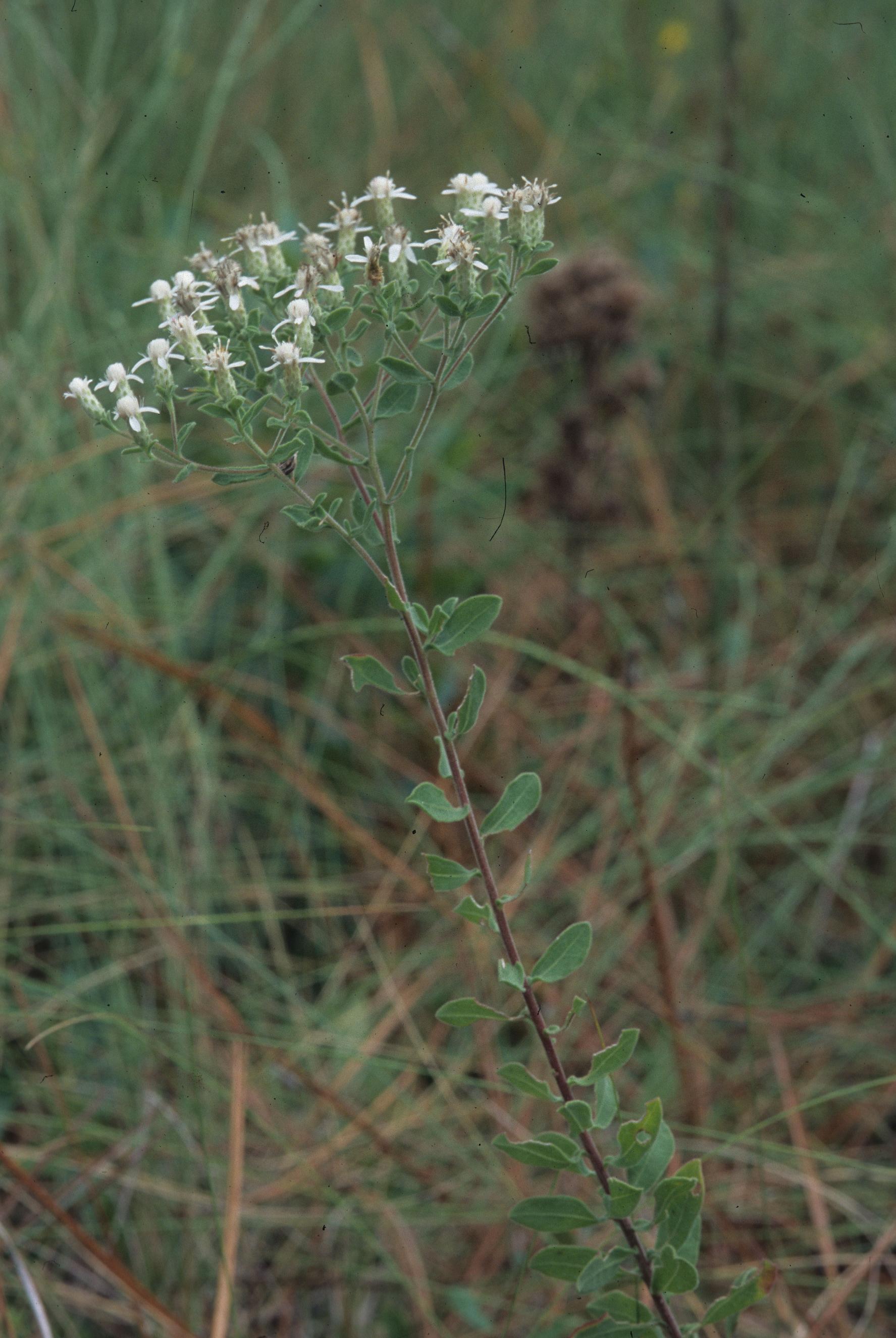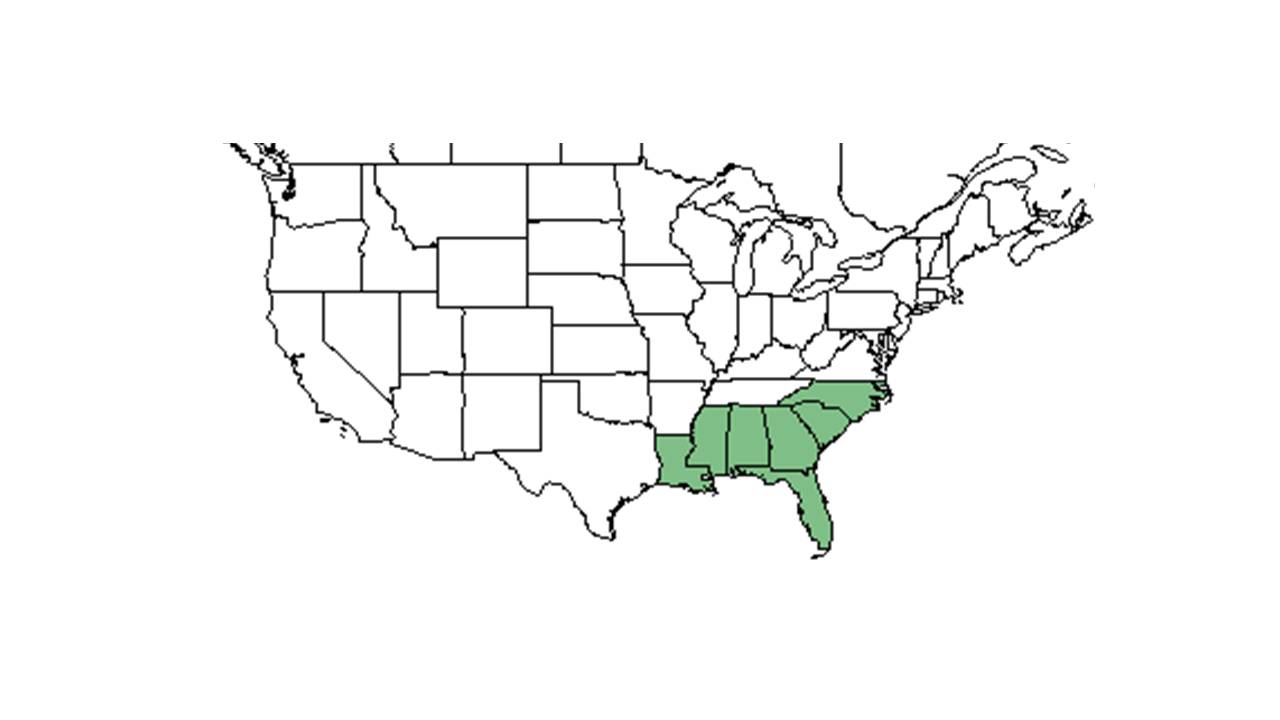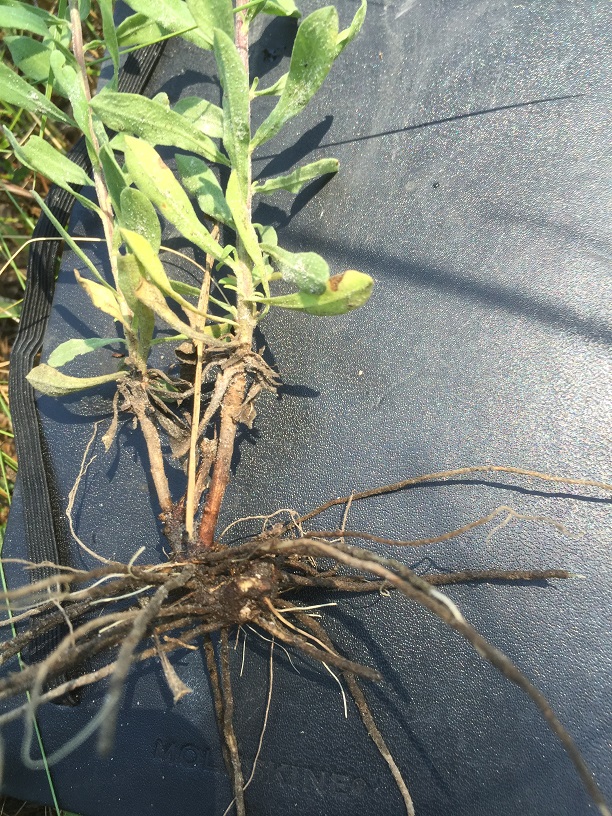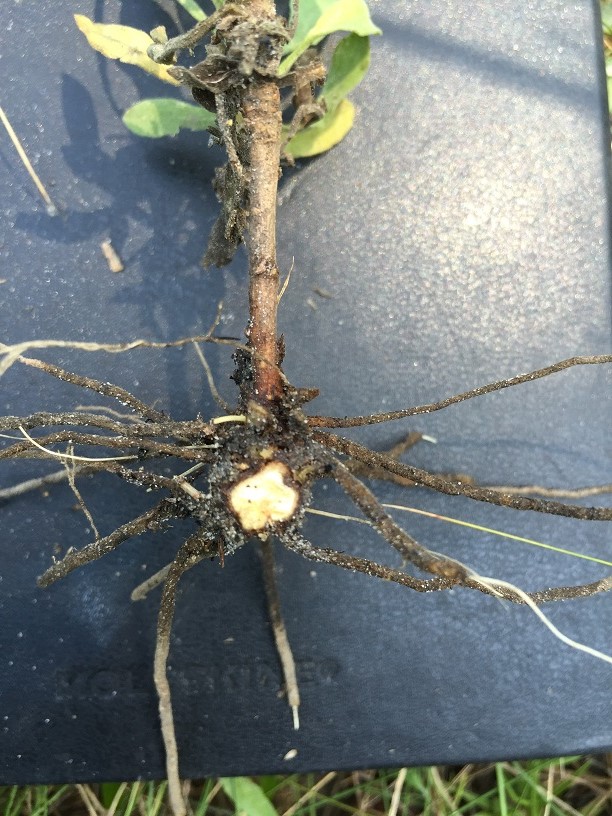Difference between revisions of "Sericocarpus tortifolius"
(→Seed dispersal) |
|||
| Line 35: | Line 35: | ||
===Seed dispersal=== | ===Seed dispersal=== | ||
| − | This species is thought to be dispersed by wind. <ref>Kirkman, L. Katherine. Unpublished database of seed dispersal mode of plants found in Coastal Plain longleaf pine-grasslands of the Jones Ecological Research Center, Georgia.</ref> | + | This species is thought to be dispersed by wind.<ref>Kirkman, L. Katherine. Unpublished database of seed dispersal mode of plants found in Coastal Plain longleaf pine-grasslands of the Jones Ecological Research Center, Georgia.</ref> |
<!--===Seed bank and germination===--> | <!--===Seed bank and germination===--> | ||
Revision as of 12:47, 13 May 2021
| Sericocarpus tortifolius | |
|---|---|

| |
| Photo was taken by Gil Nelson | |
| Scientific classification | |
| Kingdom: | Plantae |
| Division: | Magnoliophyta – Flowering plants |
| Class: | Magnoliopsida – Dicotyledons |
| Order: | Asterales |
| Family: | Asteraceae ⁄ Compositae |
| Genus: | Sericocarpus |
| Species: | S. tortifolius |
| Binomial name | |
| Sericocarpus tortifolius (Michx.) Nees | |

| |
| Natural range of Sericocarpus tortifolius from USDA NRCS Plants Database. | |
Common names: Dixie whitetop aster, Twisted-leaf white-topped aster
Contents
Taxonomic notes
Synonyms: Aster tortifolius Michaux; Sericocarpus bifoliatus (Walter) Porter
Description
A description of Sericocarpus tortifolius is provided in The Flora of North America.
Distribution
Ecology
Habitat
In the Coastal Plain in Florida and Georgia, S. tortifolius can be found in longleaf pine-wiregrass communities, flat pinelands, burned slash pines, longleaf pine-turkey oak, upland sand ridges, annually burned upland pines, dry pine barrens, live oak woodlands, wet flatwoods, open oak-hickory forests, longleaf pine savannas, and cabbage palm mixed hardwood hammocks.[1] Disturbed areas where it is found include recently logged longleaf pine forests, margins of old fields, sandy fallow fields, vacant lots, roadsides, and pine plantations. Soil types include loamy sand, loam soils and sandy loam.[1] Associated species include Andropogon, Schizachyrium, Pityopsis, Solidago, Balduina, and Sporobolus.[1]
Sericocarpus tortifolius is frequent and abundant in the North Florida Longleaf Woodlands, North Florida Subxeric Sandhills, Clayhill Longleaf Woodlands, and Panhandle Silty Longleaf Woodlands community types as described in Carr et al. (2010).[2]
Phenology
S. tortifolius has been observed flowering in January as well as March through November and fruiting July through November.[1][3]
Seed dispersal
This species is thought to be dispersed by wind.[4]
Fire ecology
It thrives in frequently burned pine communities.[1]
Pollination
The following Hymenoptera families and species were observed visiting flowers of Sericocarpus tortifolius at Archbold Biological Station. [5]
Halictidae: Lasioglossum nymphalis
Conservation and management
Cultivation and restoration
Photo Gallery
References and notes
- ↑ 1.0 1.1 1.2 1.3 1.4 Florida State University Robert K. Godfrey Herbarium database. URL: http://herbarium.bio.fsu.edu. Last accessed: July 2015. Collectors: Loran C. Anderson, Bruce Hansen, JoAnn Hansen, Robert L. Lazor, Robert K. Godfrey, A. F. Clewell, A. H. Curtiss, John Beckner, Richard S. Mitchell, C. Jackson, Paul L. Redfearn, Jr., R. E. Perdue, Jr., William B. Fox, R. Kral, Gary R. Knight, R. Komarek, R. A. Norris, Cecil R Slaughter, Steven P. Christman, David K. Dorman. States and Counties: Florida: Alachua, Bay, Duval, Escambia, Franklin, Gadsden, Jackson, Jefferson, Leon, Levy, Liberty, Nassau, Orange, Osceola, Polk, Putnam, St. Johns, Wakulla. Georgia: Baker, Thomas. Compiled by Tall Timbers Research Station and Land Conservancy.
- ↑ Carr, S.C., K.M. Robertson, and R.K. Peet. 2010. A vegetation classification of fire-dependent pinelands of Florida. Castanea 75:153-189.
- ↑ Nelson, G. PanFlora: Plant data for the eastern United States with emphasis on the Southeastern Coastal Plains, Florida, and the Florida Panhandle. www.gilnelson.com/PanFlora/ Accessed: 13 DEC 2016
- ↑ Kirkman, L. Katherine. Unpublished database of seed dispersal mode of plants found in Coastal Plain longleaf pine-grasslands of the Jones Ecological Research Center, Georgia.
- ↑ Deyrup, M.A. and N.D. 2015. Database of observations of Hymenoptera visitations to flowers of plants on Archbold Biological Station, Florida, USA.

